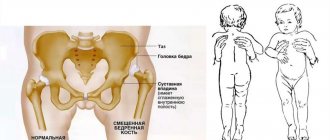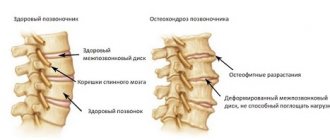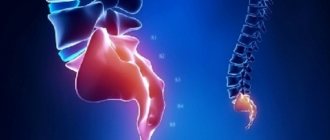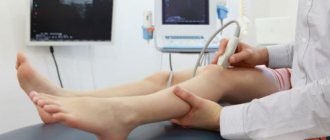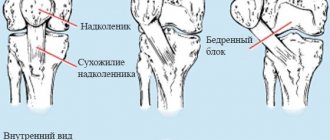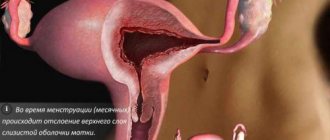about the problem
Torticollis (torticollis) is a disease that is characterized by an inclined position of the head with its rotation in the opposite direction, caused by a change in either the soft tissues of the neck, or subluxation of the cervical vertebrae, or a disease of the nerves of the neck.
There are two main types of torticollis: congenital (the child is born with it initially) and acquired (occurs due to disturbances in the cervical spine during childbirth or later).
Congenital torticollis develops in the prenatal period. Congenital torticollis can be bone, when the cervical vertebrae are formed incorrectly, or muscle, when the cervical muscle (sternocleidomastoid) shortens and thickens. The cause of the development of congenital torticollis may be incorrect position of the fetus, incorrect structure of the mother's pelvis, infectious diseases, and some hereditary diseases.
The causes of the development of acquired torticollis can be pathological childbirth, leading to subluxation of the cervical vertebrae. Typically, such births are accompanied by entanglement of the umbilical cord, ischemia, the application of obstetric forceps, pressure on the abdomen during pushing or the administration of drugs that stimulate labor, as well as during cesarean section. Thus, the cervical vertebrae, neck muscles, and ligaments between the vertebrae are injured, forming torticollis. In older age, curvature of the neck can occur as a result of injuries, infectious diseases and diseases of the nervous system.
The most common cause of torticollis is rotational subluxation of the first cervical vertebra - the atlas.
When congenital torticollis develops, the main damage is experienced by a special muscle - the sternocleidomastoid, which is involved in the processes of nodding the head, turning and bending.
Without adequate therapy, the muscle thickens and shortens, gradually atrophying. Defects of the skull are formed with its smoothing on the affected side, asymmetry of the skull and pathological position of the head. With severe lesions, the shoulder on the affected side may rise, the eye on the affected side may change, and deformations of the facial and cerebral parts of the skull are pronounced. Without treatment, permanent deformities occur.
Quite often in our practice, we are faced with an erroneously established diagnosis of torticollis, when “initial torticollis” occurs due to various reasons, and not true shortening and thickening of the sternocleidomastoid muscle (congenital muscular torticollis). These types of torticollis include: idiopathic torticollis, neurogenic torticollis, traumatic osteoarticular torticollis, torticollis from rotational subluxation of the atlantoaxial joint, congenital short form of torticollis, torticollis from paralytic strabismus and others.
Causes and localization of neck pain in a child
Neck pain can occur at any age in children. Most often, doctors discover that they are caused by inflammation of the lymph nodes or hypothermia.
Neck pain in a child often occurs due to inflammation of the lymph nodes
It can also lead to discomfort:
- vertebral displacement;
- meningitis;
- acute torticollis;
- increased load on the shoulders;
- injury;
- incorrect posture.
With hypothermia or prolonged exposure to a draft, painful sensations may appear in the neck area. They are triggered by muscle spasms. Children begin to complain of pain after a long rest or sleep.
Incorrect posture, uncomfortable pillow, heavy backpacks or excessive physical activity lead to increased muscle tone in the shoulder girdle and neck. The result is pain.
Often, when complaining of discomfort in the neck, doctors discover that the lymph nodes are enlarged . In parallel, the pain spreads to the chest and spine. When the lymph nodes become inflamed, discomfort appears in the throat, and the body temperature may rise.
With meningitis, neck pain is not the only symptom . With this disease, the temperature rises, severe vomiting occurs, and even loss of consciousness is possible. Lack of timely prescribed treatment can cause the death of a small patient.
If a child has torticollis , he will constantly keep his head tilted to one side. When you try to straighten it out, severe pain occurs.
When making a diagnosis, an important role is played by the localization of unpleasant sensations.
Video: “Enlarged lymph nodes - dangerous or not?”
Pain on the right
The causes of pain on the right side of the neck and on the left are usually the same
Discomfort on the right side indicates mechanical problems. The cause of its occurrence may be a sprain of muscles and ligaments. Also, pain on the right side occurs due to changes in the intervertebral joints. In children, severe pain is observed with torticollis.
On the right side, pain also occurs due to:
- muscle strain;
- hypothermia;
- prolonged stay in an uncomfortable position, for example, during sleep;
- injuries;
- juvenile rheumatoid arthritis.
If the pain is constant and bothers you both during the day and at night, then it is necessary to exclude the appearance of tumors . With malignant neoplasms, metastases can affect the cervical spine.
When changes occur in the cervical and thoracic spine, severe pain occurs on the right side. They are constant, aching, and worsen with physical activity.
The most common cause of pain in children is cervical lymphadenitis, which is a complication of tonsillitis..
Left
The causes and nature of pain on the left and right sides of the neck are the same . Discomfort may be caused by:
- torticollis;
- muscle spasm;
- inflammation of the lymph nodes;
- injuries;
- rheumatoid arthritis;
- tumors;
- intracranial hemorrhages;
- abscesses;
- meningitis.
Depending on the cause, the pain can be a constant nagging or sharp sensation. For example, after a long static load, muscles may spasm. In this case, acute pain will appear after sleeping in an uncomfortable position or sitting at the computer for a long time.
Behind
If a child complains of pain that is localized along the back of the neck, then a muscle strain or subluxation of the cervical vertebra is possible. This diagnosis can be made by a traumatologist.
Pain in the back of the cervical spine may occur due to a normal muscle strain.
Also, the appearance of unpleasant sensations can be caused by:
- hypothermia;
- long-term static loads;
- injuries;
- meningitis;
- malignant tumors;
- irritation of nerve roots;
- complications of infectious diseases.
In case of injuries or tumors, the pain will be severe. Young patients complain that they do not go away. After prolonged exercise, during hypothermia, the painful sensations are aching in nature.
Front
Pain on the anterior surface of the neck occurs most often due to:
- injuries;
- mumps (mumps);
- erysipelas;
- laryngitis;
- tonsillitis.
Children may complain and say that the front of the neck hurts due to inflammatory diseases of the throat. The pain is severe, cutting, and intensifies when talking and swallowing. With erysipelas, severe pain occurs when you try to tilt your head back.
Throat inflammation causes cutting pain in the front of the neck
A characteristic symptom of mumps is inflammation of the parotid salivary glands. This disease provokes the appearance of acute pain.
Read more about the causes of neck pain in different locations:
- You can read more about pain in the front of the neck at this link
- You can find out how to eliminate pain in the neck and back of the head on the page
- You will learn about the causes and nature of neck pain on the left side here
- To find out what causes neck pain after sleep and how to choose a pillow, follow this link
- Why does my neck hurt on the right side and how to cure it?
standard treatment
Different types of torticollis require a specialized approach. True torticollis in newborns can be treated conservatively, since all tissues and muscles are still pliable and the muscle can be stretched and developed. For severe lesions leading to a pronounced defect, surgical treatment may be required. Surgery is recommended only after multiple options have failed to produce positive results. Surgeries are prescribed extremely rarely, since parents and doctors always manage to notice the incorrect position of the head in time and treat it.
Conservative therapy includes: special massage to correct the tone of the neck muscles, activate blood circulation, physiotherapeutic procedures, the use of special orthopedic products, the Shants collar, special positioning of the child during sleep with towels and bolsters rolled up and placed under the back, osteopathic techniques.
All methods of conservative therapy are effective in affecting the compaction in the sternocleidomastoid muscle, they correct torticollis. But if the cause of torticollis is injury to the cervical vertebrae, bone abnormalities or diseases of the nervous system, then such treatment is ineffective. When such treatment is carried out, the head tilt usually goes away, and vertebral subluxation often remains unresolved, which doctors at our center diagnose on radiographs of the neck in older children.
Associated symptoms
Did you know that...
Next fact
A doctor can determine the exact cause of pain. He examines the child and conducts a survey. Other symptoms that occur simultaneously with discomfort in the cervical region are also important.
Unpleasant sensations can occur in children in the first months of life. At this age, discomfort appears due to torticollis. Parents and doctors should pay attention to the following signs :
- the child keeps his head tilted to one side; when trying to straighten it, anxiety and crying appear;
- poor sleep, frequent crying for no reason;
- the appearance of facial asymmetry.
Older children may complain of headaches. Their cervical spine mobility is limited and their gait is impaired.
Rheumatoid arthritis is an autoimmune disease. It can appear at an early age. It is characterized by damage to connective tissue, most often affecting the joints. You can suspect problems if your child exhibits the following symptoms :
- lethargy;
- limited mobility in the morning;
- complaints of pain in the back of the neck, crunching, clicking when moving;
- temperature rise to subfebrile levels;
- weight loss;
- increased sweating.
For diagnosis, you will need to conduct an ultrasound of the joints, radiography, and MRI.
Meningitis affects the membranes of the brain and spinal cord. This disease is characterized by the appearance of so-called meningeal symptoms :
- pain in the neck and head becomes unbearable;
- vomiting begins;
- body temperature rises quickly;
- drowsiness appears;
- loss of consciousness is possible.
The diagnosis can only be confirmed in a hospital by performing a lumbar puncture.
Video: “Meningitis: symptoms and treatment in a child”
Inflammation of the lymph nodes is accompanied by severe pain in the left or right side of the neck. With lymphadenitis, the lymph nodes become enlarged, which is accompanied by painful sensations in the neck and throat. In young children, the disease is accompanied by a sharp rise in temperature.
Injuries occur due to bruises and sudden shocks . Swelling or bruising may become noticeable in the affected area. The pain is aching, nagging. Even minor injuries should not be ignored, because they can lead to a concussion or vertebral fractures.
Poor posture causes pain in the neck and head. At the same time, small patients may complain of discomfort in the area of the shoulder blades and shoulder girdle.
Muscle spasms most often occur in teenagers. The pain is localized on one side, and when it occurs, it is difficult to turn your head. In parallel with discomfort in the neck area, the following symptoms appear :
- headache;
- numbness of the skin of the upper extremities;
- difficulty raising your arm.
The cause may be vitamin deficiency, vascular dystonia, uneven muscle growth.
Associated symptoms are important to establish a preliminary diagnosis. Based on the complaint, the pediatrician can redirect the little patient to a specialist.
our treatment
Treatment courses for torticollis in children consist of successive stages depending on the specific cause of torticollis.
The specialists of our center own a number of patents on X-ray diagnostics and treatment of torticollis, the cause of which is subluxation of the first cervical vertebra - the atlas. To reduce the atlas and eliminate torticollis, a traction collar of an original design is used (Patent No. 2587960).
The fundamental difference from all existing collars is the traction effect, relieving the pathological spasm of the neck muscles with a displaced atlas and restoring its correct position.
We have been successfully treating torticollis for more than 25 years. Before starting treatment, an X-ray examination is carried out to determine the exact cause of torticollis. As a result of treatment, the subluxation of the atlas is reduced and the torticollis is eliminated.
cost of treatment
The cost of treatment in our center is calculated individually, depending on the severity of the disease, its duration and the presence of complications.
Each patient is prescribed comprehensive sequential treatment in the form of a course of individually selected procedures.
In addition to the procedures, the treatment course includes a free follow-up appointment.
Initial and repeat appointments, as well as medications prescribed by a doctor, are paid separately. The cost of the initial appointment is 3,000 rubles.
A 10% discount is provided for a one-time payment for a treatment course.
start of treatment
Treatment of torticollis in our center begins with an appointment with a neurologist. The initial appointment is conducted by the candidate of medical sciences, chief medical doctor Lyudmila Ivanovna Mazheiko.
At the appointment, the neurologist finds out how the child was born, whether there were any circumstances under which the cervical vertebrae were displaced, whether there were any head injuries, falls from a height, or inflammatory processes.
The child is examined in detail, the spine and nervous system are examined in order to distinguish between congenital, traumatic, hereditary and other forms of torticollis. X-rays and tests are prescribed if necessary, depending on the type of torticollis. Based on the results of the examination, a course of treatment is carried out and the diagnosis is completely removed.
Appointments with a neurologist are carried out by appointment. To begin treatment, make an appointment.
Relieving neck pain in children
In some cases, a child may be prescribed an orthopedic collar. Treatment tactics are selected only after the cause of the discomfort has been established. Therefore, attempts at self-treatment can be harmful. In some cases, children have to wear a special collar corset.
You can help a child who complains of painful sensations after finding out the diagnosis. In some cases, the condition can be improved by muscle relaxation : it is necessary to press on the areas in which painful sensations are concentrated. This will allow your muscles to relax.
Cold compresses can help reduce pain. You can use any food from the freezer; you must first wrap it in a towel.
If the cause of pain is muscle spasm, then warming up will help alleviate the condition.
Medicines
Drug therapy is selected for each patient individually . Ibuprofen-based medications will help relieve pain and reduce inflammation.
In case of exacerbation of inflammatory processes or muscle spasms, warming compresses and ointments are prescribed. Suitable antispasmodics and analgesics are also recommended.
The condition can be normalized with the help of exercises, massage, and physiotherapeutic procedures.
Patients with rheumatoid arthritis are prescribed immunosuppressants, anti-inflammatory drugs, and corticosteroids. Physiotherapy is used in parallel.
In addition to anti-inflammatory drugs, children with lymphadenitis must be prescribed antibiotics.
Surgery
For cervical pain, surgery may be necessary if it is caused by torticollis . But no one prescribes surgery right away. They are trying to correct the situation using conservative methods: massage, gymnastics, and prescribing medications designed to reduce muscle spasms.
Folk remedies
Home medicine for neck diseases in a child is best treated under the supervision of a specialist. The choice of alternative treatment methods must be approached carefully .
They can be used after a diagnosis has been established and agreed with the treating doctor.
You can make your own warming ointment based on pine buds, St. John's wort, mint, and eucalyptus. The components are taken in equal quantities, crushed into powder, filled with water and boiled.
After this, butter and vegetable oil are added to the prepared product, and the resulting mixture is cooled. It is used for external use.
Some people recommend using boiled parsley roots. Compresses are made from the decoction prepared from them.
Exercise therapy
If the pain was caused by problems with the spine, then one of the most effective methods of therapy is the appointment of a physical therapy complex. It is recommended for postural disorders and torticollis . Exercise therapy is also indicated for rheumatoid arthritis .
Massage
In cases where discomfort in the cervical region is caused by torticollis, rheumatoid arthritis, muscle spasms, excessive physical activity, or minor injuries, professional massage will help speed up the normalization of the condition. But it needs to be entrusted to specialists.
An experienced massage therapist will be able to stretch the neck muscles and upper back. The actions are aimed at relaxing all tense muscles and toning weakened muscles. This allows you to remove spasms and restore the supporting function of the spinal muscles. It becomes easier for them to keep the spine in the correct position.
Video: “What to do if a child complains of pain: advice from a pediatrician”
